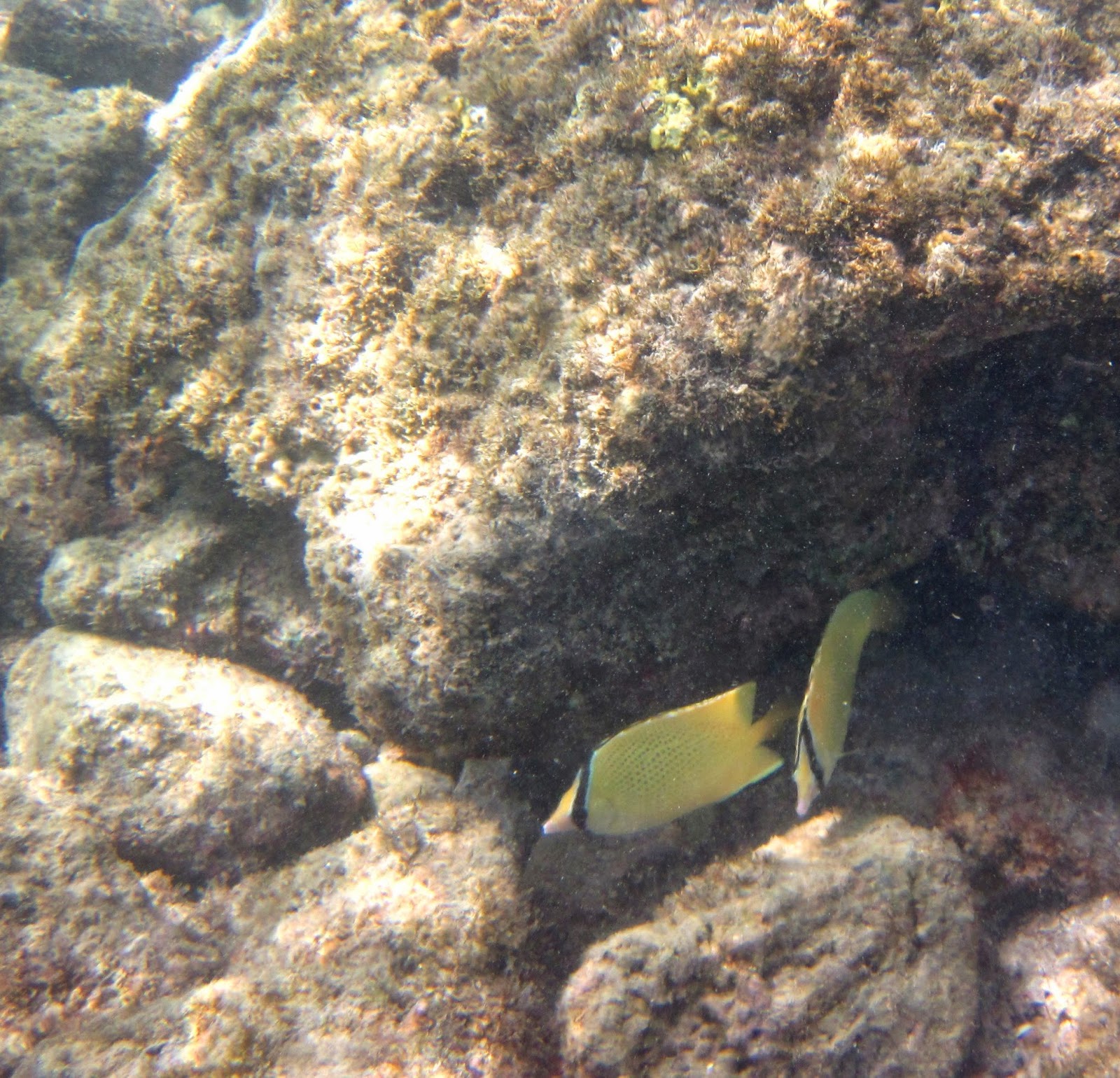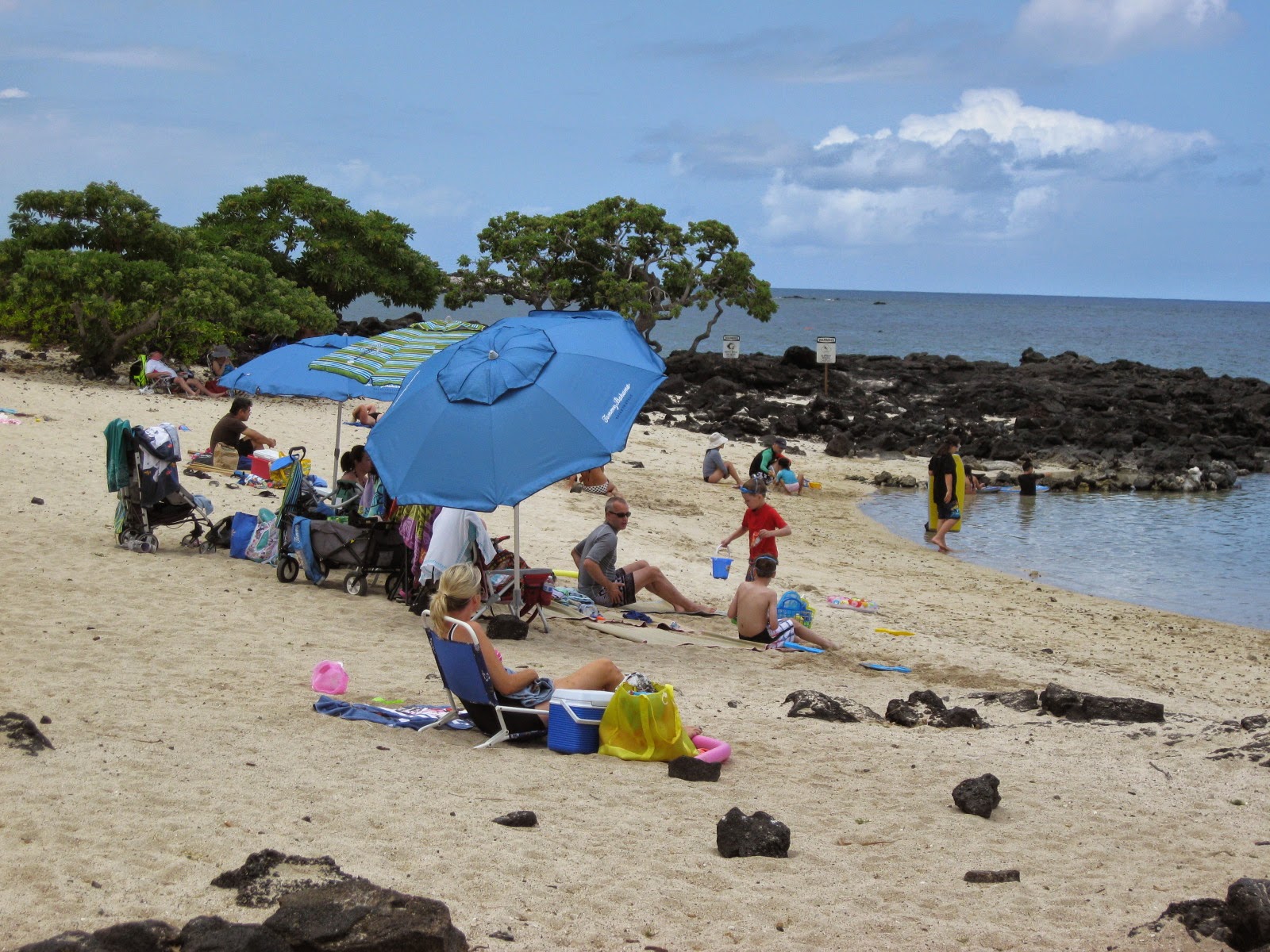 |
| Snap! No wonder he's smiling! |
Snap, as defined in the Modern Urban Dictionary, is a term of dismay. As in "Snap! My pit bull just ate my last three oxycodones." As it replaces a phrase or two that might cause one to be labeled coarse or vulgar in genteel company, "Snap!" can be quite useful. But I digress.
It was usual suspects all the way our to the palace, where I was momentarily surprised to see a fellow swimming rapidly fifteen feet below me wearing very long fins. "Why is he swimming so fast in the opposite
 |
| Seven Eleven Crab Carpilius maculatus Kailua Kona 2014 |
Well, I always want to see something cool. I suppose that's why I go snorkeling. So I followed him back about five yards and, amazingly, the crab was still there. It was a Seven Eleven Crab, dining happily on the sand just outside the reef. As it was only about twelve feet down, I was able to dive quite close to get the pictures you see here.
The crab was remarkably large, perhaps eight inches across. In Hoover's critter book, John notes that this crab is usually seen at night. This may explain why I haven't seen it before. (I really ought to swim at night more frequently.) He also discusses the distinctive coloration. His photo shows a tan carapace with burgundy spots. This animal had a gray blue carapace with dark gray spots. If one uses her imagination, one might be convinced that the spots are a dark shade of violet. Regardless, there is no doubt about the identification. This was a Seven Eleven Crab! Tick it off.
In defense of the photographer, if you want to take a really sharp underwater picture, you need really clear water. The water here has been cloudy at best since our return.
 |
| How much air remains in your lung after forced exhalation? |
Back on the beach, I encountered my guide, whose name is Rob. Rob likes to free dive with his Go Pro camera. He had some amusing tales of diving with the rays at the cleaning station which segued into a description of the mild delerium he experiences when he stays down too long. After a brief discussion of hypoxia, hypercarbia and respiratory physiology, we bid a fond farewell with hopes that we might meet again in the briny deep.
Yesterday Sandra and I took an excursion. Our grandchild, my very namesake, and his parents are coming for a visit in a few short weeks and we wanted to check out the beach near the Four Seasons. It was our recollection that Kuki'o Beach might be just the place for young Keahi to become acquainted with Kanaloa.
Taking the first left after Cemetery Beach, were greeted cordially by Lono at the gatehouse and issued a visitors beach pass. After traversing multiple jarring traffic bumps, we arrived at the parking area. It was
 |
| Milletseed Pair in Denuded Kuki'o Bay |
Sandra settled down to read her book, while I made my way to the sandy entry. In times gone by, entering here might not have been so easy, but the rocks at the shoreline have been stripped of coral. Swimming out, I could not avoid noticing that most of the rocks in the shallows were now devoid of marine life, Maybe just a thin veneer of algae. Que triste! In spite of this lack of coral, I did encounter a pair of Milletseed Butterflyfish. to the bitter end, I will not lose hope that this handsome species, once so common, recovers.
Further out, there were small patches of coral among larger areas where coral had lived before the era of coral death. Fish were not especially plentiful and very spooky. There were a pair of spear fishermen
 |
| Longspine Pufferfish Diodon holocanthus Bonaire 2009 |
But suddenly right below me was a Longspine Pufferfish, Diodon holocanthus. Although I used to see this handsome fish every time I came to Hawaii back in the 80s it has become really uncommon. I can't recall the last time I saw one in Hawaii. Sandra and I did see one in Bonaire five years ago, so I have a photo to show you. The fish in Bonaire were quite docile... spearfishing is not allowed on that small Caribbean island. This fish, quite to the contrary, took off like a bat out of hell. It makes me wonder if spear fishermen are so indiscriminate that they take poisonous puffers, or do all the fish get jumpy when they are in area of frequent spear fishing? Well, as any fish in the sea can out swim me, my pursuit was in vain; I did not get a lovely photo, but at least I got a good, brief look. Tick it off!
 |
| The Beach Scene at Kuki'o Bay |
On our way out we got another look at the beach, now littered with keikis in their colorful bathing costumes. Happily, even at 11 AM on this weekday, there were a few parking spots available. We'll see you back on this beach in early August with little Keahi!
 |
| Aloha Keahi! Lookin' Good at the Bay Luau! |





